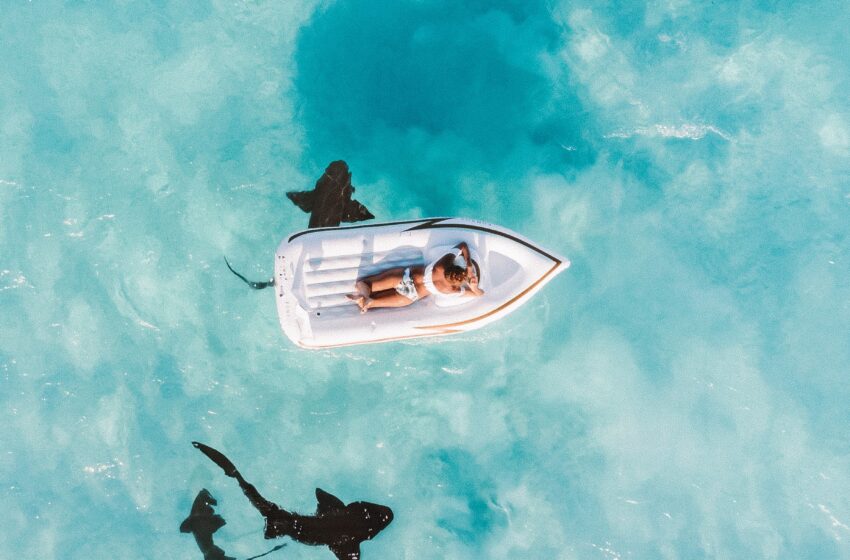
The Bahamas Only Travel Guide You Need For A Great Trip in 11 Easy Steps
- Destinations Americas
Cruisit Team
- May 9, 2022
- 0
- 4626
- 66 minutes read
The Bahamas Background
The early modern history of the Bahamas begins with Christopher Columbus, who discovered the island in 1492. When the legendary explorer first set foot in the New World on San Salvador, the islands were inhabited by Arawak Indians. Many years later, in 1647, British settlers established on the islands; the islands became a colony in 1783. British were established in the Bahamas for a long time until July 10, 1973, when they finally gained independence and stopped being a British colony. Since then, the Bahamas has flourished through tourism, international banking, and investment management (at least that’s the legal part).
Once a harbor for pirates and Loyalists is today a playground for the wealthy and privileged, as well as anybody who appreciates world-class fishing, boating, diving, snorkeling, and sailing.
Spangled between the depths of the North Atlantic and Florida’s eastern coast, the Bahamas, is technically not a part of the Caribbean. The Bahamas consists of more than 700 unique and beautiful subtropical islands and thousands of cays, most of which are uninhabited, sprinkled across the Atlantic Ocean and the Caribbean Sea. This tropical paradise is both lavish and gorgeous, with spectacular coral and fathomless ocean trenches lying only 80 kilometers from Florida at its closest point or about a 2-hour flight from many other countries surrounding it.
What makes the Bahamas very attractive is not only its proximity to the neighboring nations but also the shallow waters of the sun-baked Bahamas are lined with wreck dives and coral reefs, with up to 60m (197ft) visibility for an underwater window onto vibrant marine life is a diver’s must. The dazzling sapphire waters, powdery sands, sublime shades of blue, and the crisp weather year-round will make any beach lover fall, well, in love of course.
Because many islands are not populated in the Bahamas, the archipelago offers a true castaway experience, especially when visited by boat. Island hopping around this paradisiacal archipelago, is a great way for you to soak up all of its beauty.
Couple all that with the extremely rich history and an interesting blend of various cultures that the Bahamas offers makes it a very appealing destination. From the grit and bustle of funky Nassau to swimming with pigs, and the vast mangroves of Andros, the astonishing array of beaches, reefs, forests and historic towns to be discovered, all within the compass of an hour’s flight.
“From the hustling and bustling of vibrant Nassau to the enormous mangroves of Andros, there is an incredible assortment of beaches, reefs, woods, and old villages to explore.“
Nassau, the nation’s capital, on New Providence Island, attracts the most tourists. This bustling cruise port is a mix of mega-resorts, shops, restaurants, and entertainment complexes. Grand Bahama follows in second place. For first-time visitors to Nassau, the best places to stay for sightseeing are on Paradise Island near Atlantis and along the white sands of Cable Beach. Downtown Nassau is also packed with attractions, such as the straw market, duty-free shops, and the National Art Gallery. You will find street sellers in the Bahamas anytime on the beach and when walking around the Bahamas. Tropical fruits, coconut water, and snacks you can buy from them. You will also discover that The Bahamian locals are a laid-back lot, and a night spent at a fish fry with a drink in hand is not to be missed.
The Bahamas is an inescapably pricey destination but whether sailing around the Abacos’ history-filled Loyalist Cays, partying at Paradise Island’s Atlantis resort, swimming with wild pigs, or lounging on Eleuthera’s pink-sand beaches, there’s likely a Bahamian island to match almost every water- and sand-based compulsion, all framed by a backdrop of gorgeous, mesmerizing blue.
With all this information sinking deep, you could be wondering, what is the best time of the year to visit the Bahamas? The answer simply depends on your style (more on that below).
- Wander around Port Lucaya Marketplace, the Bahamas’ largest open-air market.
- Grand Bahama has the world’s longest underwater cave system.
- Pink Sand on Harbour Island is a must-see for everyone who adores the color pink.
- The Pirates of Nassau Museum will teach you about the days of piracy.
- Snorkel at Dean’s Blue Hole before hiking around the nearby cliffs.
- Take the 66 steps up the ancient Queen’s Staircase.
- Choose some handcrafted items from the famed Nassau Straw Market.
- Take in the view of Nassau from the top of Fort Fincastle.
- Exuma, the swimming pig’s beach, and the greatest dive locations are all worth a visit.
- Green Turtle Cay transports you back in time.
- Spend the day at the sprawling Atlantis Resort.
- Visit the Blue Lagoon Islan to see dolphins.
- A trip to the Bahamas isn’t complete until you go sailing or diving.
- The Nassau SUB Bahamas Adventure is an excellent option if you like to keep your hair dry while viewing the underwater attractions.
- You should be aware that USD is accepted in the Bahamas. The Bahamian Dollar is the currency of the Bahamas, and one US dollar is now equal one BSD Bahamian Dollar. If you carry USD, you may use them to travel across the Bahamas without having to convert them.
- Bahamians speak English, therefore communicating with them will be simple.
- In the Bahamas, tap water is safe to drink.
- Flights between islands are expensive (around $200 round way), so if you’re on a budget, stick to one island.
Crime & Scams
Is it safe to visit the Bahamas? If you are traveling to the Bahamas from a Western nation. You will not have any problems if you are watchful and act appropriately and properly; simply apply common sense. When taking money from an ATM, try to be cautious. Hire a look about, avoid wandering around late at night, and instead take a cab. Yes, indeed! Traveling in the Bahamas is risk-free.
In Nassau, be cautious in the “Over the Hill” neighborhood (south of Shirley Street). Burglaries, armed robberies, and sexual assault do occur, although not often in tourist areas. Commercial recreational watercraft activities, including marine cruises, are inconsistently controlled. Watercraft are frequently neglected, and many businesses lack safety certificates to operate in The Bahamas. Jet-ski operators have been known to commit sexual assaults against tourists.
Health
Dengue fever is endemic to Latin America and the Caribbean and can occur throughout the year.
Medical treatment is of a good standard but can be expensive. Emergency medical facilities are limited in all the family and privately owned Islands and serious cases are transferred to Nassau, Freeport, or Miami by air ambulance. Make sure you have adequate travel health insurance and accessible funds to cover the cost of any medical treatment abroad and repatriation.
Throughout the Bahamian summer, which is the busiest, there is less rainfall than normal (December to April). From May through November, it rains almost every day and is considered the low season. The best time to visit The Bahamas is in November or late April, when the weather is pleasant and there are less tourists, yet you are still far outside of hurricane season.
Shoulder Seasons
The shoulder season officially begins in April. Spring breakers flock to Grand Bahama, while more remote islands like Cat Island, Long Island, and Eleuthera provide a respite from the masses. Remember that Good Friday, Easter Sunday, and Easter Monday are national holidays in the Bahamas, and therefore many establishments will be closed.
If you’re looking for a party, shoulder season is the best time to pull up to a beachside bar and mingle. Flocks of spring breakers descend on the Bahamas from stateside colleges each year in early spring with few families sprinkled in amongst the throngs, especially at popular all-inclusive retreats.
For divers, Tiger sharks migrate to Grand Bahama’s Tiger Beach in October and stay through December. Though October is typically the rainiest month of the year, breaks in the weather offer excellent opportunities for budget-minded divers who can still take advantage of low-season deals.
November is not so busy that it is suffocating There are also a lot of flight deals around this time and the hotels are not too busy as well to the degree that you could even get a free upgrade on your reserved room.
Those looking for a more tranquil getaway may still take advantage of shoulder season discounts in May and June when warmer temperatures and a higher risk of rain begin to decrease the regular stream of tourists that began during the winter months. During the shoulder season, hotel discounts could go below 20%.
High (Peak) Season
The peak season lasts from December through March, with January being the busiest month. The month of January begins with a flurry of festivities and parties. High temperatures in the mid 20s (70F) make it easy to enjoy the celebrations. Hotel costs reflect how advantageous this season is as well. The Bahamas is a favorite winter vacation for North Americans fleeing snow, ice, and dreary weather on the mainland, with daytime temperatures ranging between 21 and 27 degrees Celsius.
This time of year in the Bahamas also delivers bucket list marine species, from December, when tiger sharks arrive, through February, when great hammerhead sharks migrate to Bimini, attracting divers from all over the world. This makes the island country even more appealing to divers seeking marvelous underwater finds.
Elsewhere, the country’s airports and resort lobbies are busy as the high season flow of guests continues. To book a visit during this time period, you must do so several months in advance.
Off-Season
For many visitors, the months of June through September are the most inconvenient to visit the island. Pick a day in the Bahamas during this time period and it’s likely to be stormy (mainly in August and September), rainy, or otherwise dismal (in June and July). Though hurricanes are uncommon, the islands are prone to tropical thunderstorms, which you should be prepared for.
Storms usually pass in a few hours, providing plenty of time for activities. An increase in humidity and rain possibilities during the low season may dissuade some visitors, but, there is no “worst time” to visit the Bahamas. You may want to just bring a light rain jacket with you.
What is the trade-off for taking a gamble with the weather in the Bahamas? There are shorter queues at the diving shops and fewer crowds on the beach. The seas are still warm and the temperature is pleasant, and for budget-conscious tourists, the rates are so low that it becomes suddenly appealing.
September is considered the most volatile month for Bahamian weather, so visitors should keep a watch on the forecast. While you can usually count on a bright day in the Bahamas virtually any time of year, September may be especially challenging.
Bahamas entry is the easiest for the US, UK, and EU citizens who can stay for up to 90 days without a visa. As a result, you will have sufficient time and will not have to worry about obtaining a visa for the Bahamas. For other nationalities, check the requirements before you leave for this journey.
By Plane
Which airlines fly directly to the Bahamas? As an archipelago, there are numerous regular flights. Nonstop flights to the Bahamas are available from American Airlines, Envoy Air, JetBlue, Delta, Qatar Airways, United, Bahamasair, and Republic Airways. All planes arrive at Nassau Airport.
By Boat
Waterways connect the Bahamas to neighboring countries and between the islands. One can go to the Bahamas via cruise ship or yacht. However, direct ferries between neighboring countries and the Bahamas are rare, if at all exist.
By Plane
The best way to travel between the islands of the Bahamas is via plane. Inter-island flights to popular destinations such as Andros, Harbour Island, Eleuthera, the Exumas, and the Abacos range in price from $125 to $150, with flight times varying from 25 to 60 minutes.
Domestic carriers such as Bahsmamsair, Flamingo Air, and Southern Air travel to the Out Islands, also known as the Family Islands, on a regular basis. Most aircraft have only one row, so pack light. However, your luggage is always checked, so they do not have to be carry-on sized.
The country has 20 international airports, but Lynden Pindling International Airport, located on the western end of New Providence island, is the largest and busiest, as well as a center for inter-island flights.
By Car
Driving in the Bahamas is a great opportunity to see more of the country. Cars are driven on the left side of the road in the Bahamas since it was a British colony. Driving in the Bahamas, notably in Nassau, is distinguished by one-way streets, narrow roads, and heavy traffic.
The majority of the islands have offices for major rental car companies such as Hertz, Alamo, National, Avis, and Budget. An international driver’s license is necessary to drive in the Bahamas. A US passport is sufficient for Americans, but if your stay exceeds three months, an international driver’s license is required.
By Taxi
Taxis are another option for transportation, and there are many professional drivers available. Most taxis have a fixed price, but some are metered, so double-check before getting in.
Note that taxis are expensive in the Bahamas, with rates ranging from $10 to $20 USD depending on the distance. In the Bahamas, Uber is not available. A water taxi, which is another expensive option, may be used to get around the islands.
By Bus
The most economical and extensively utilized mode of local transportation in the Bahamas is by public bus called the Jitney Bus, which costs roughly $1-4 USD per person for a one-way ticket and will take tourists from one side of the island to the other. Buses operate from 6 a.m. to roughly 7 p.m., so plan on taking another method of transportation, such as a cab, in the evening.
Because buses may not run on a precise timetable, this may not be the ideal option if you are on a tight schedule. There are bus stations, but you may also wave one down. When you’re ready to get off, simply scream “Stop.” The exact change is preferred, and buses do not operate outside of Nassau.
By Boat
The most convenient and entertaining modes of transportation to and from the Out Islands are boats, ferries, and water taxis. Some of the islands, such as Harbor Island, are only accessible by boat from Nassau or Eleuthera, depending on your point of entry. Nevertheless, Boats and ferries run frequently throughout the day.
Ferries depart Nassau in the morning for Harbor Island and return in the evening. The port is approximately 40 minutes from Lynden Pindling International Airport, therefore transportation must be organized ahead of time.
Travelers from Eleuthera will discover that a boat taxi to Harbor Island is a far cheaper choice, costing only around $5. You can pay when you arrive. The water taxi terminal is only a short distance from the North Eleuthera airport, leaving every 5 minutes.
One-way ferry tickets to Grand Bahama Island, The Abacos, Andros, and the Exumas start at around $92.95 with Bahamas Ferries.
The two largest mobile network operators in the Bahamas are BTC and Aliv. For as little as $3.60, BTC offers data-only subscriptions with 500MB of internet. Aliv, on the other hand, has a monthly fee of $4 for 1GB of data and 30 minutes/texts. They are accessible at the Nassau International Airport as well as authorized stores around the island. Both businesses provide similar coverage and speeds. Aliv has more favorable limits but is somewhat more expensive than BTC.
You may also get a prepaid eSim card from a company like Airalo, SIMCorner, or Nomad. All the providers offer data-only plans that may be used with an eSim-enabled phone, so make sure your phone is compatible. It is also possible to sign up for a Solis WiFi Hotspot. Check before you travel because they only serve select areas. Airalo provides the most extensive coverage of over 180 nations.
Local Internet & WiFi
Internet in the Bahamas works well in major cities, and you will have access to the internet in most places, with the exception of isolated areas. Free WiFi is available in hostels and hotels, and many restaurants provide it.
Top Places in The Bahamas
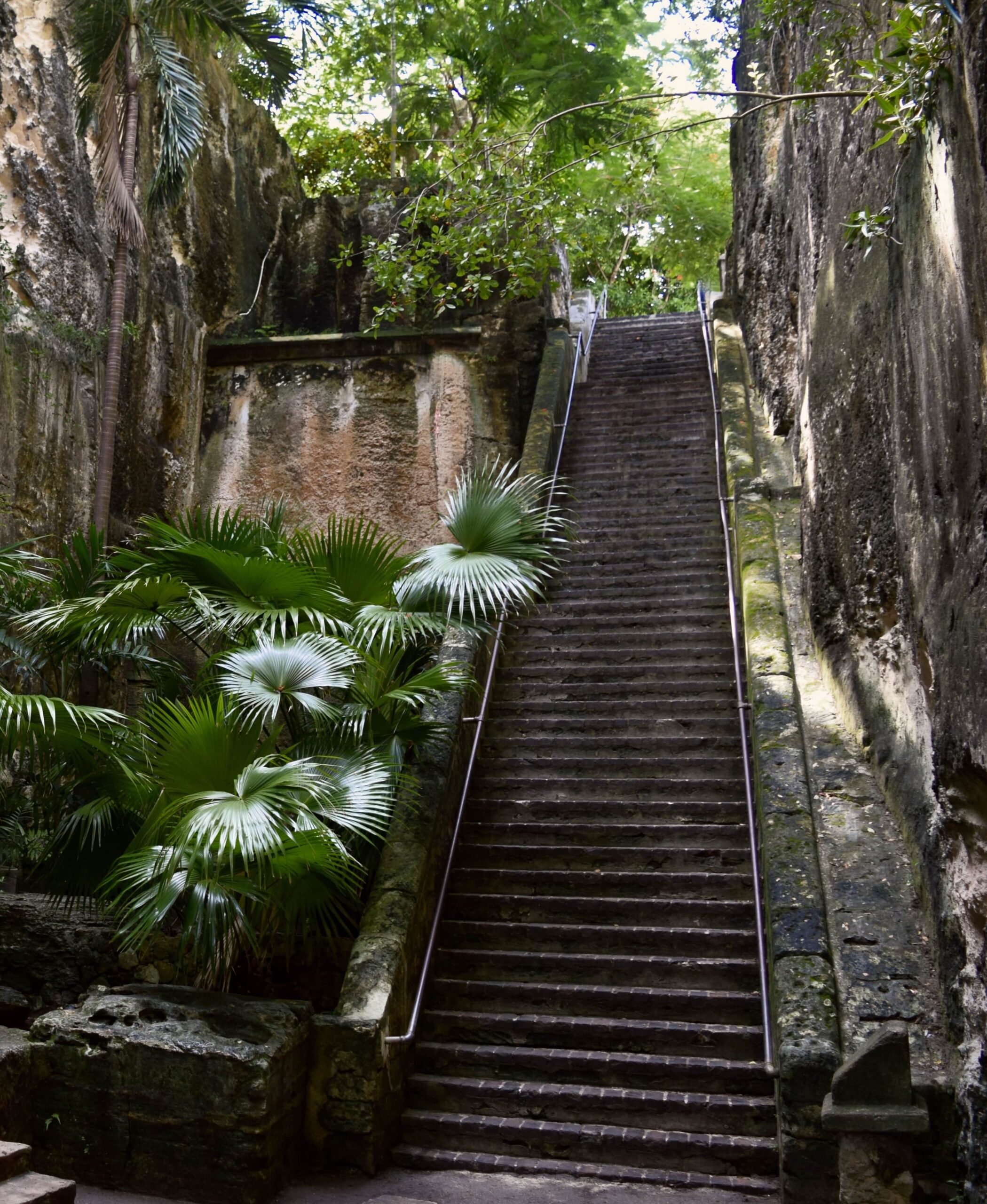
The Queen’s Staircase
The Queen’s Staircase is a 66-step stairway in Nassau, The Bahamas’ capital city. It was cut out of solid limestone rock between 1793 and 1794 by 600 slaves to build an escape passage from the fort above and is a notable landmark in Nassau. The steps are located on Bennet’s Hill in Downtown Nassau, adjacent to Princess Margaret Hospital and the University of the Bahamas’ Grosvenor Campus. Water cascades down the side of the staircase to a pool below, down a number of stairs. A boardwalk runs across the bottom, between towering stone walls, tropical flora, and trees.
Dean’s Blue Hole
Dean’s Blue Hole is a 202-metre-deep blue hole on Long Island in The Bahamas. Just after Dragon Hole in the South China Sea, this is reported to be the world’s second deepest.
Dean’s Blue Hole was called after a local landowner’s surname. It is situated in a tiny harbor separated from the open sea by a short peninsula. The entrance to this steep cave begins at the extreme tip of this little bay, at a depth of 6 m.

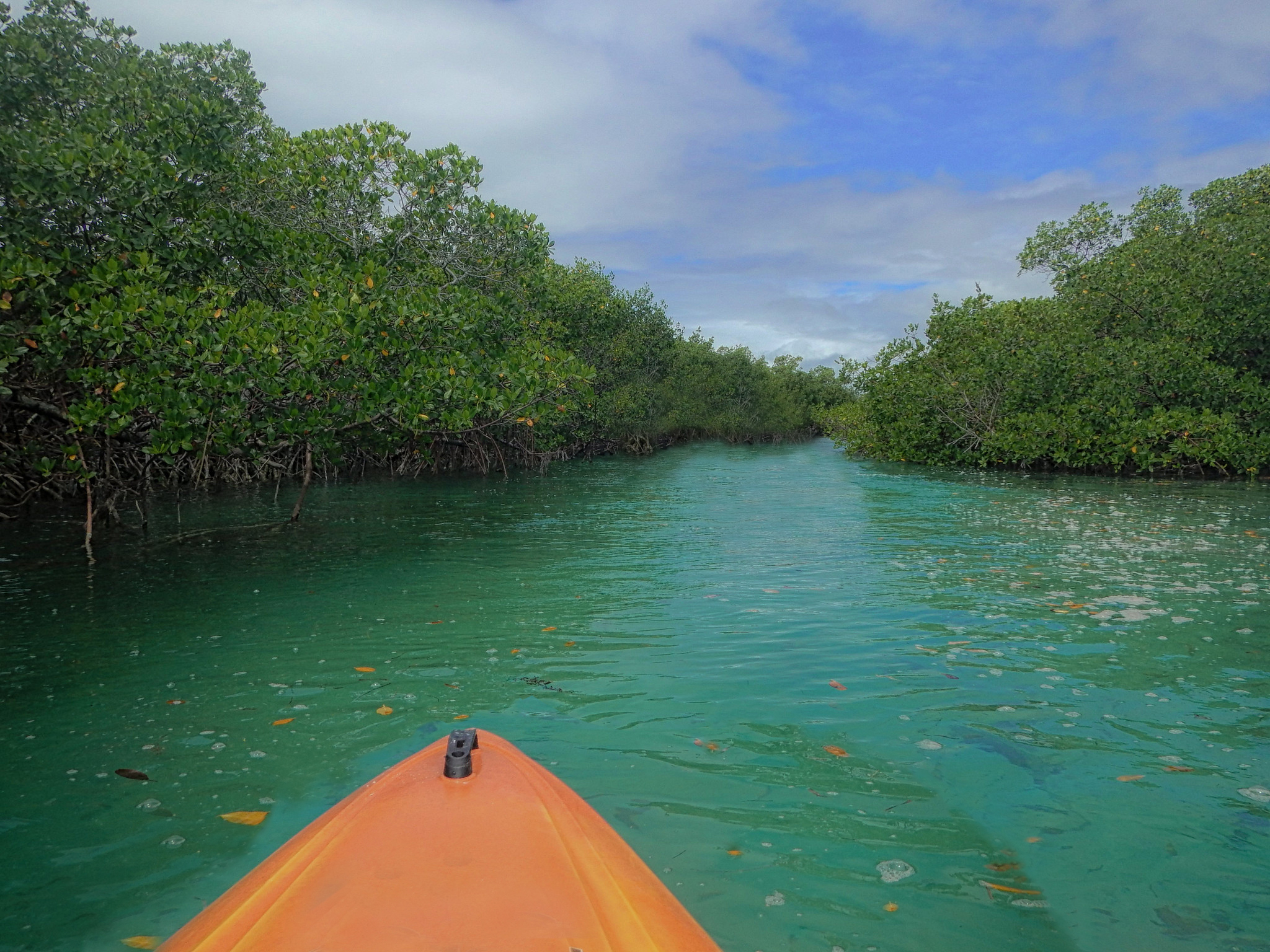
Lucayan National Park
Lucayan National Park is located in Grand Bahama, Bahamas. The park was formed in 1982 and has a land area of 40 acres, with a total of 1,937 acres. preserves one of the world’s longest mapped underwater systems cave at 6 miles long, the Lucayan Indians’ preserved remains, and a great blend of natural ecosystems such as pine woods, mangrove streams, coral reefs, and the world-famous Gold Rock Beach.
Nassau Straw Market
After the sponging business declined in the mid-1940s, Bahamian women began braiding and weaving palm tree and sisal plant leaves into baskets and fishing traps to supplement their income. This custom is still carried on at the Straw Market in Nassau.
Woven products such as hats, mats, and baskets may be purchased, as well as excellent wooden carvings, vibrant textiles, and a variety of other souvenirs. The market was heavily damaged by fire in September 2001, the market has however survived and has become a downtown tradition.


Government House
Built in 1801 and restored following the 1929 storm, this spectacular conch-pink palace atop Mount Fitzwilliam serves as the official residence of the Bahamas’ Governor General.
The edifice is an exceptional example of Georgian Colonial architecture, built of stone and supported by ionic columns. At the entryway, an 1830 statue of Christopher Columbus stands. Visitors may now roam about the complex and take in the stunning views of the bay and Paradise Island.
5-day Itinerary in The Bahamas
Day 1
Arrive to Nassau
Nassau is the Bahamas’ capital and main port of entry. The majority of guests arrive via plane or cruise ship. Apart from shopping, museums, and nightlife, Nassau is the greatest place to visit and for organizing day trips. You may also dine on local cuisine in Nassau’s restaurants.
If you’re from the United States and reside in New York or Florida, take an early flight to Nassau International Airport which arrives before midday. This gives you enough of time to enjoy the sun without wasting a day from your journey. It’s never too early to start planning your trip to the Caribbean, right?
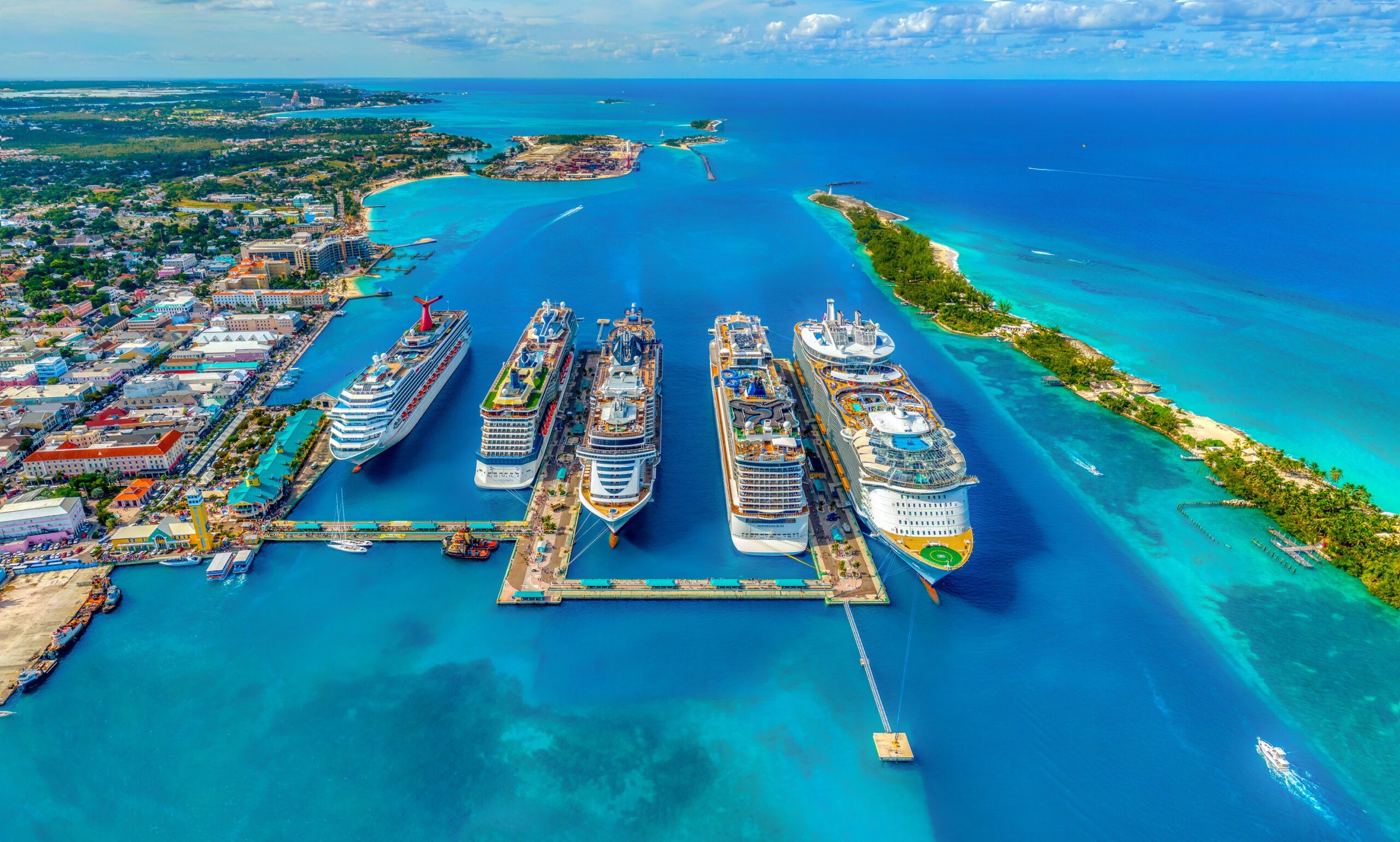
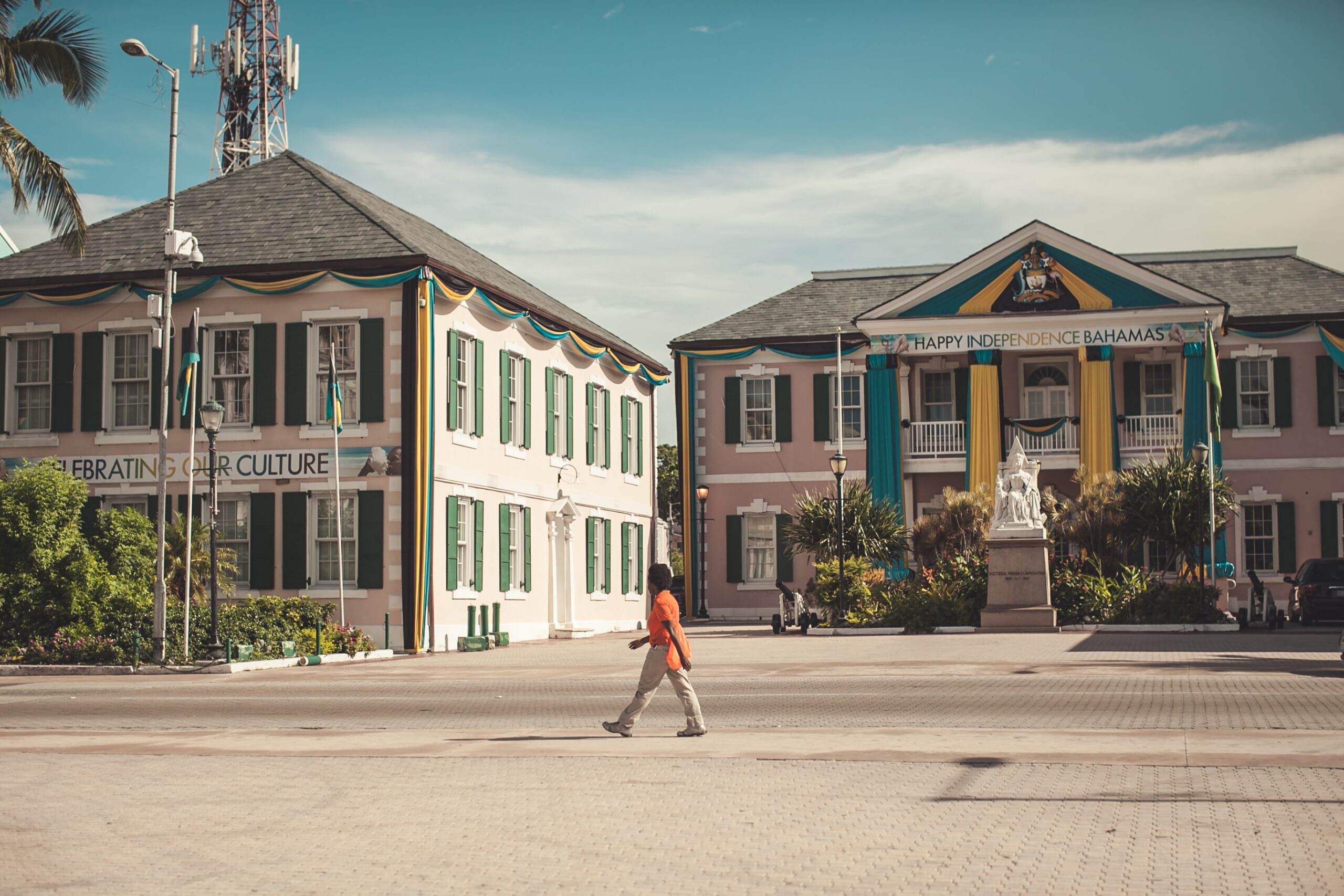
Explore downtown Nassau, where you may admire the colonial architecture. To clarify, anything pink is tied to the government. Anything green is related to the police. Along Bay Street, you’ll discover the obvious tourist traps ,as well as the famed Nassau Straw Market, where you can buy hand-woven straw hats, purses, mats, and other handcrafted things among many touristy souvenirs, of course.
After a day of seeing Nassau, end the day at Arawak Cay, often known as the Fish Fry. More than 20 vividly colored restaurants, pubs, and shacks provide the greatest Bahamian delicacies in an open-air environment in this region. It becomes crowded on weekends, especially after the cruise ship guests have left. Grab a drink and some fresh conch fritters, then interact with the locals.
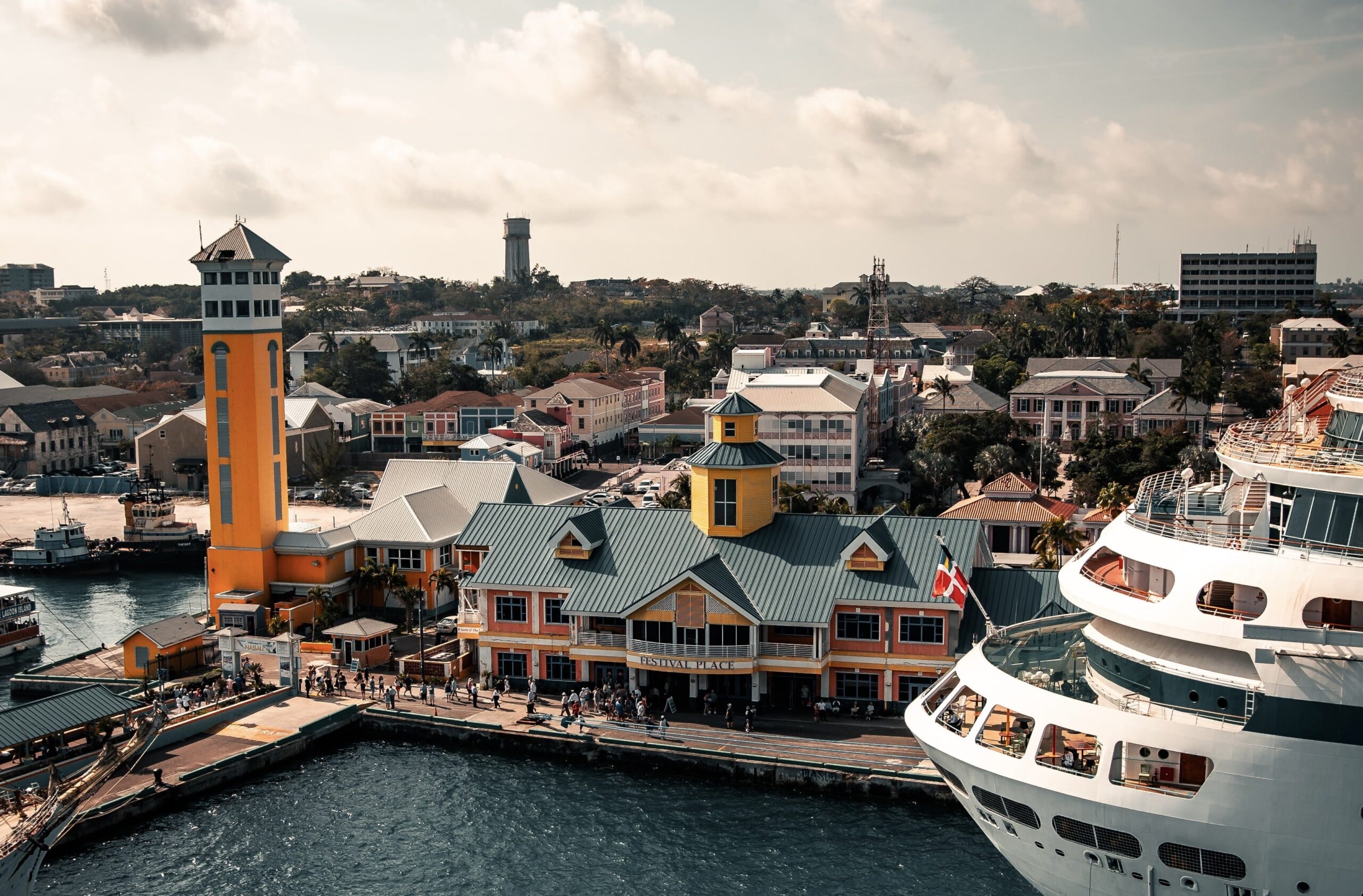
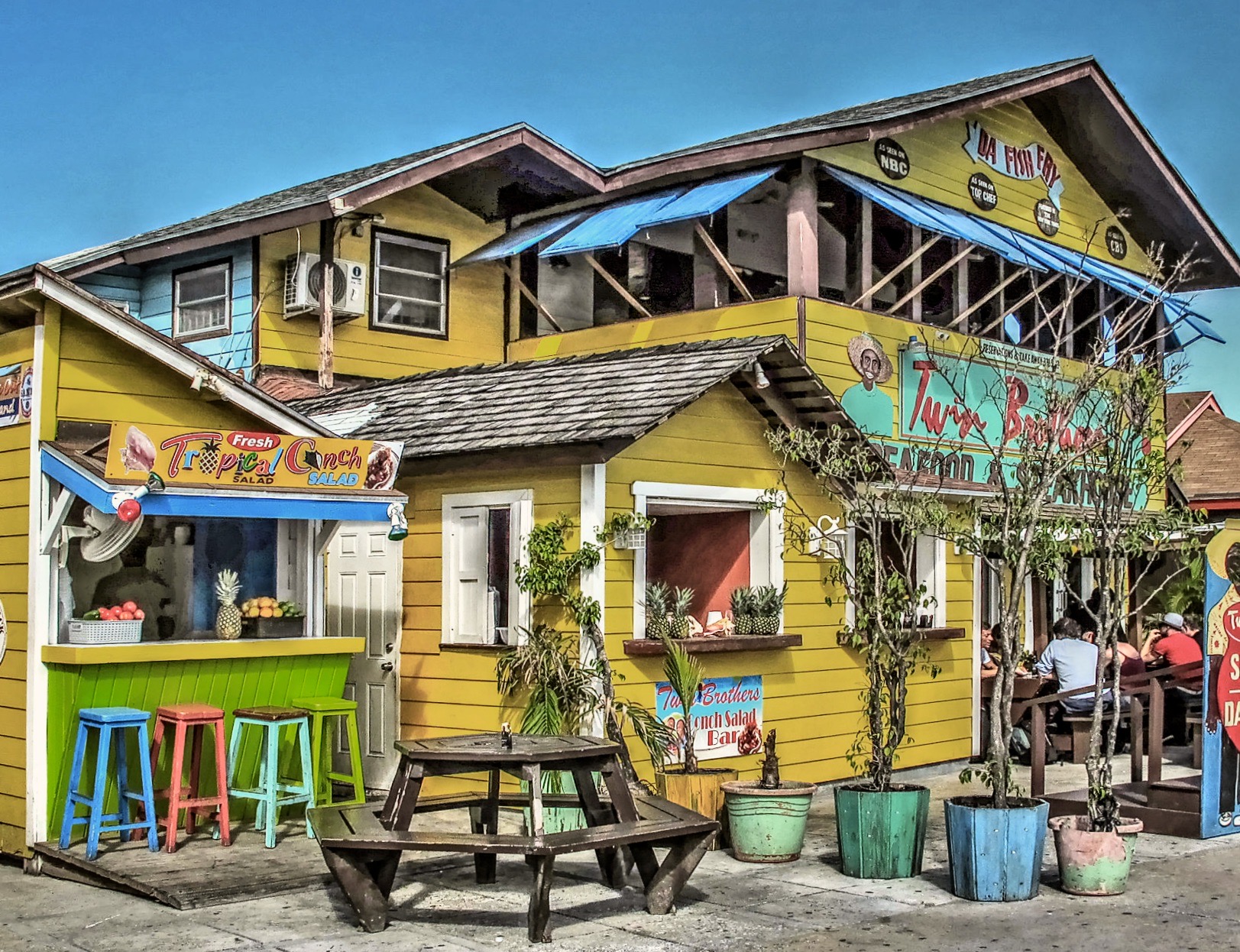
- Backpacker: HumesHostel, Ocean Front Hostel & Resort
- Budget: Bay View Suites Paradise Island, El Greco Hotel offers a pool
- Mid-range: Comfort Suites, Breezes Resort and Spa
- High end: The Cove at Atlantis, the British Colonial Hilton, Sandals Royal Bahamian Spa Resort.
This section will be added shortly.
This section will be added shortly.
Day 2
Head to Exuma
You won’t be visiting the Bahamas without seeing Pig Island, but be warned: it’s incredibly expensive, with costs starting at $170 for a half-day excursion. It’s a long journey from Nassau, but an Exuma Escapes tour will do the hard work for you. The adventure begins with an 8 a.m. pick-up, followed by a 150-nautical-mile boat ride through the magnificent turquoise seas leading to Exuma, all the way out to the deserted Big Major Cay, also known as Pig Island. Yes, swimming pigs exist, and yes, you can swim with them. There are also opportunities to feed indigenous rock iguanas, swim with sharks at Compass Cay, and dive around Pablo Escobar’s sunken cocaine jet off Norman’s Cay. The excursion will return you to Nassau by 5 p.m.

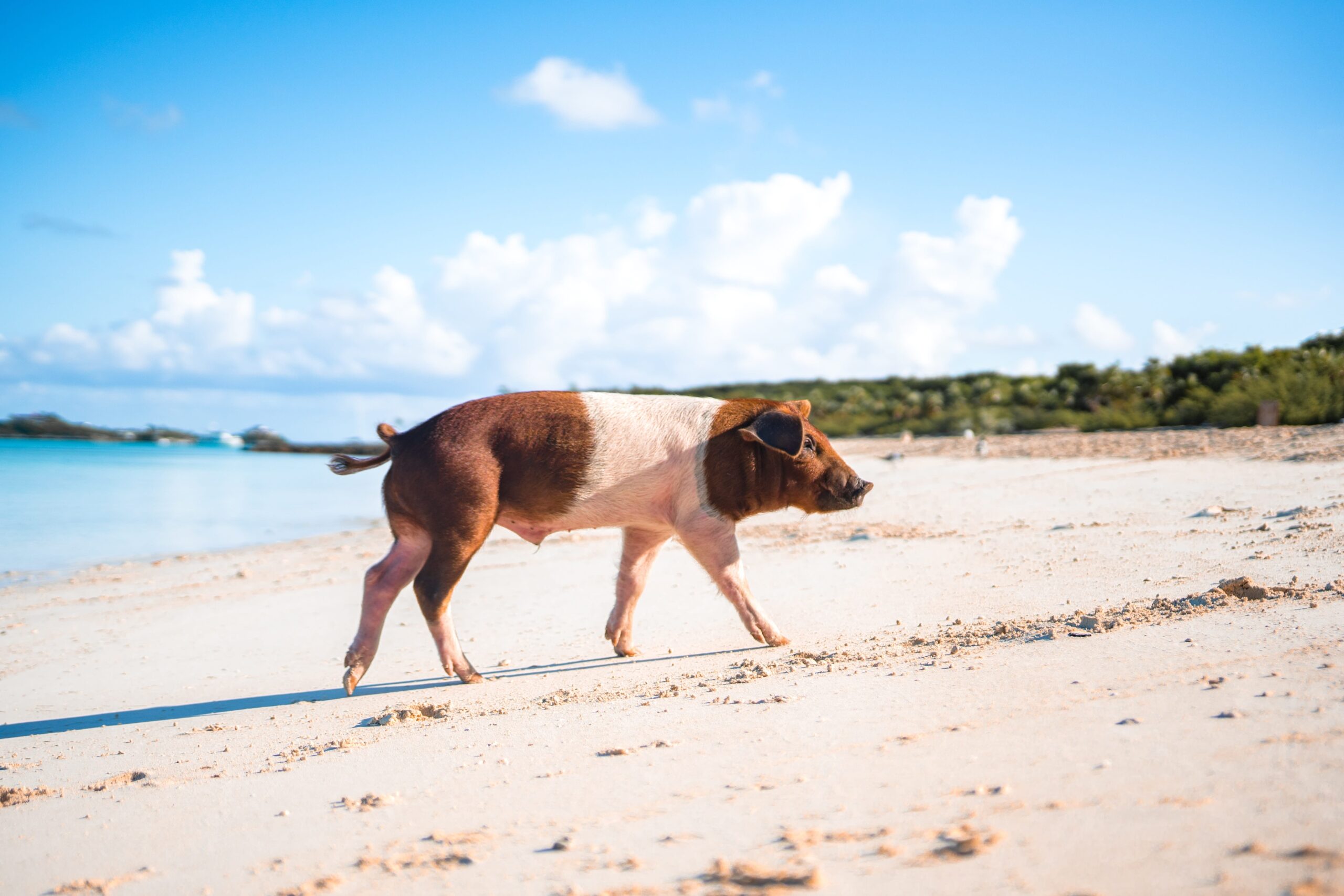
Head to Blu On The Water for supper and cocktails. There are superb grills at Santanna Bar & Grill, among others. Then if you fancy a party. The LED-paneled Bond Nightclub, located in the SLS at Baha Mar, is a 10,000-square-foot facility with sophisticated mixologists, bottle service, visiting DJs, and anything else you’d want to get your bass fix.
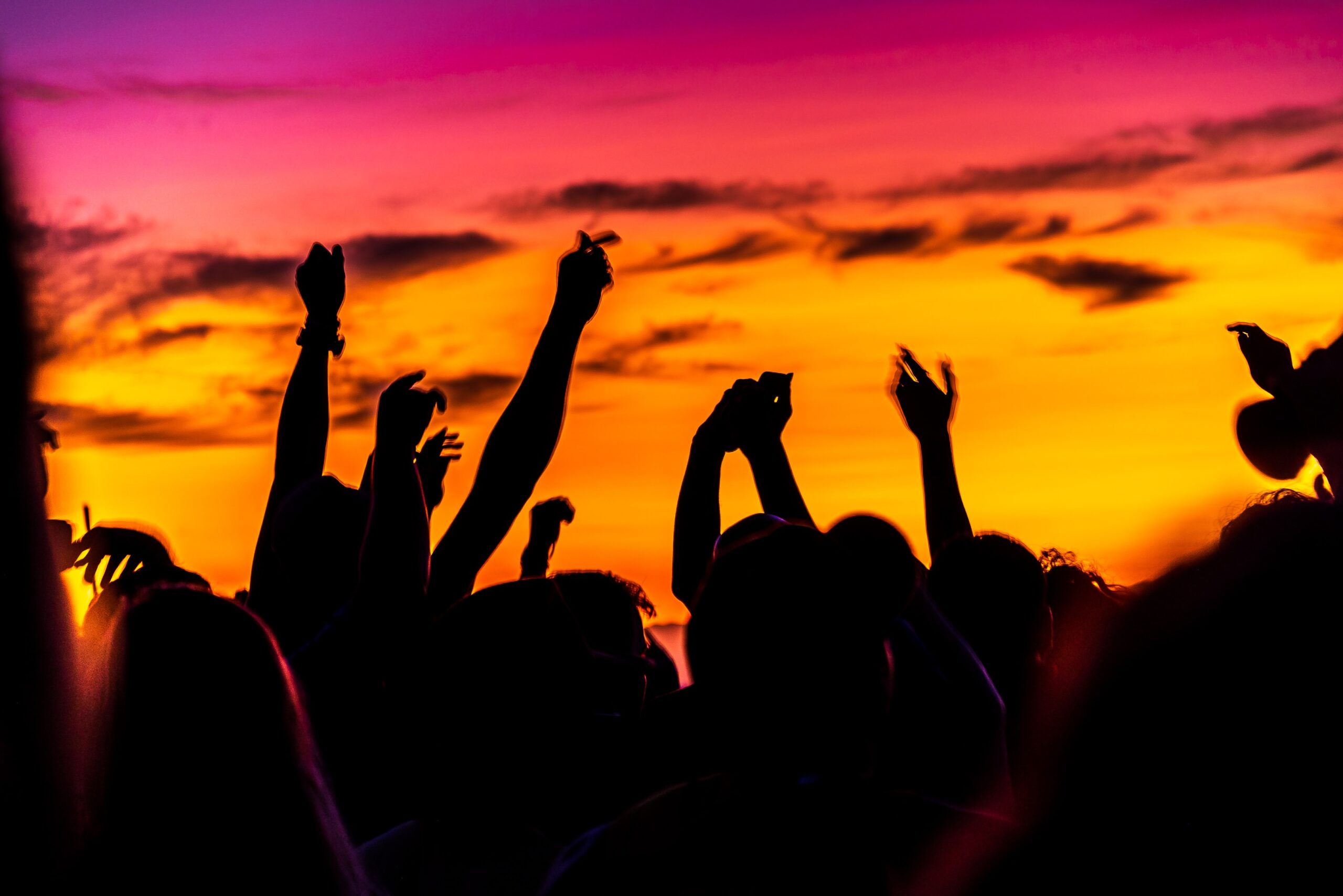
Day 3
A Diving Expedition
If the Day 2 activities on the waters wasn’t deep enough for you, try diving with Caribbean reef sharks in Stuart’s Cove, just off the coast of Nassau. Beginners can take classes, but if you already have your Open Water license, you may go on a three-hour expedition that starts at 9 a.m. or 1 p.m. and includes two dives: The first is a 30-minute descent down the sea cliffs; the second might take place at one of 12 adjacent wrecks, such as a 100-foot ship, the legendary James Bond disaster, or the Cessna featured in Jaws. The sharks themselves range in length from two to ten feet. Prices for certified divers begin about $50 for a single dive.
If diving is too much for you and you like to be close to the sun and on top of the water, snorkeling is an excellent alternative. If you’ve packed your gear, you may go to almost any beach with a reef, but be cautious and inquire before you go.
While some may not have packed their gear, expect to pay between $20 and $40 to rent the equipment for nearly a week. Prices start about $80 if you choose to go on a tour for safety reasons or to have experienced personnel bring you to the best sites.
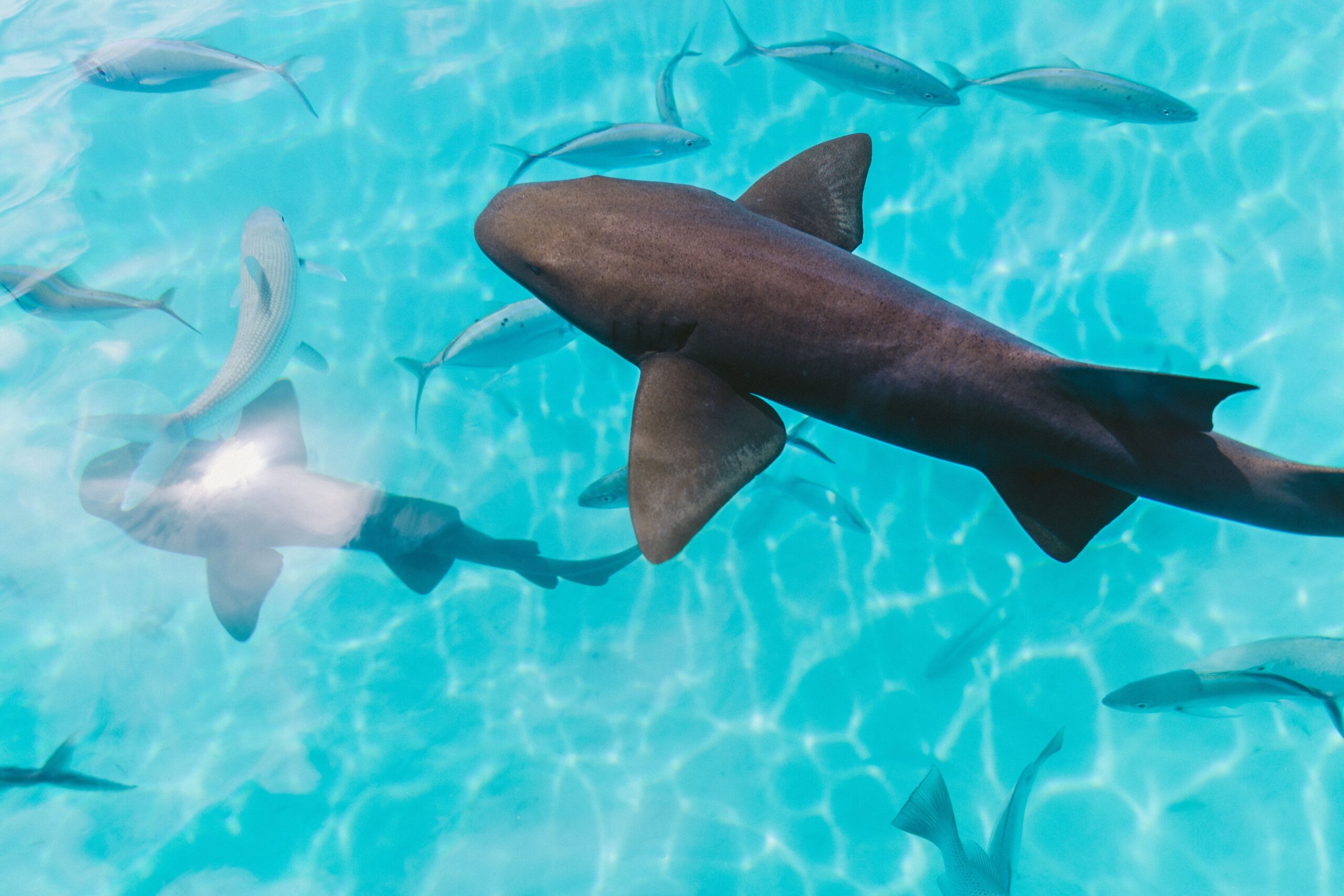
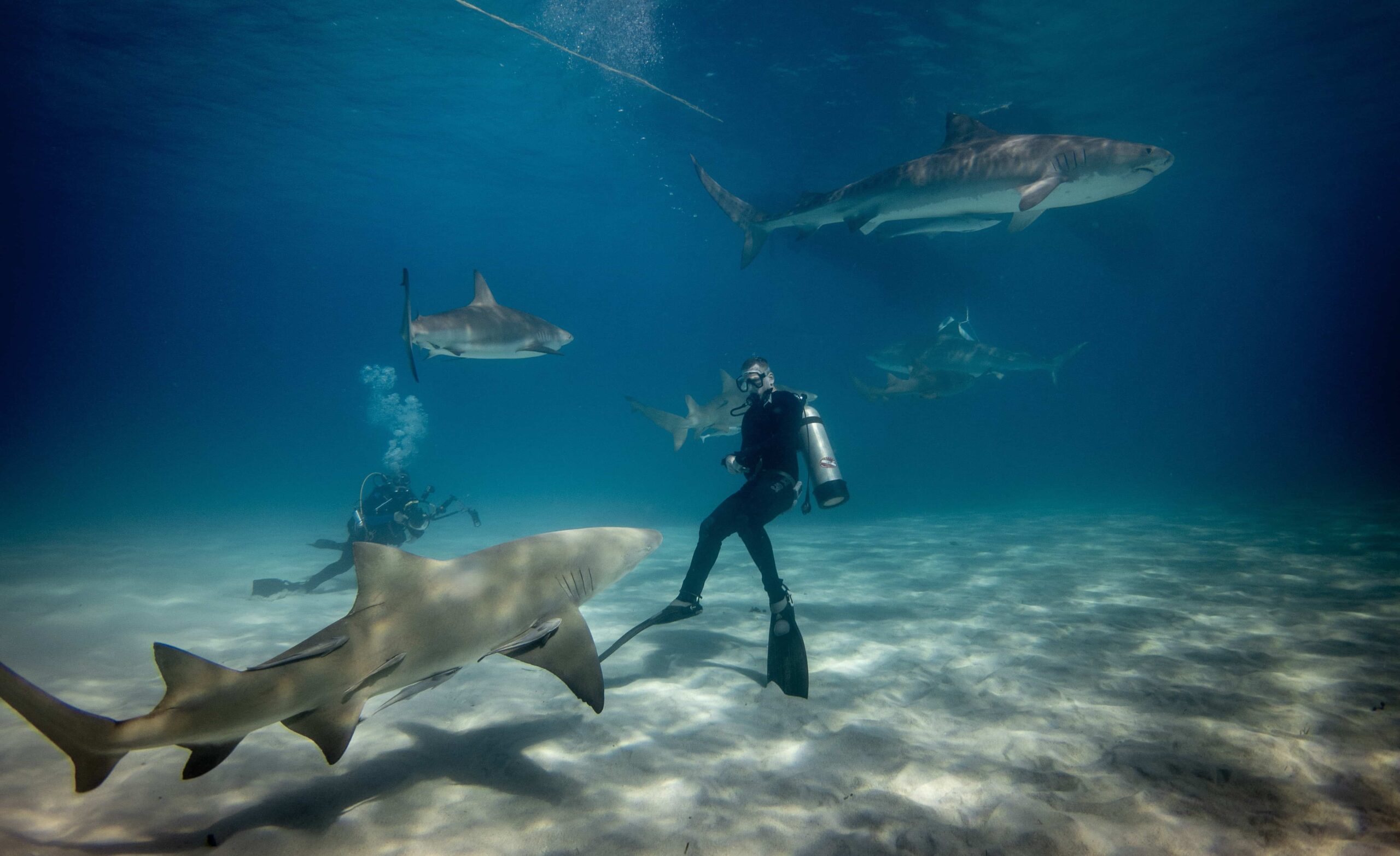

Alternatively, if you don’t enjoy being submerged in water, you may hire a jetski for roughly $180. Finally, if being in the midst of the water gives you the creeps, buy yourself a good drink, some nibbles, and some fresh fruit and lay back and soak up the sun.
Celebrate not being devoured alive by a shark at many of Nassau’s great cafes, restaurants, or bars. The open-air shack across the street from the Melia provides beverages prepared from fresh local fruit and Drinks (mostly Bahamian rum) for half the price of nearby resorts.
If you need a Sunday sports fix, go to Bahamas Cricket Club—the Bahamian/British hybrid overlooks a local cricket ground and has live games all weekend, which airs major events on TV.
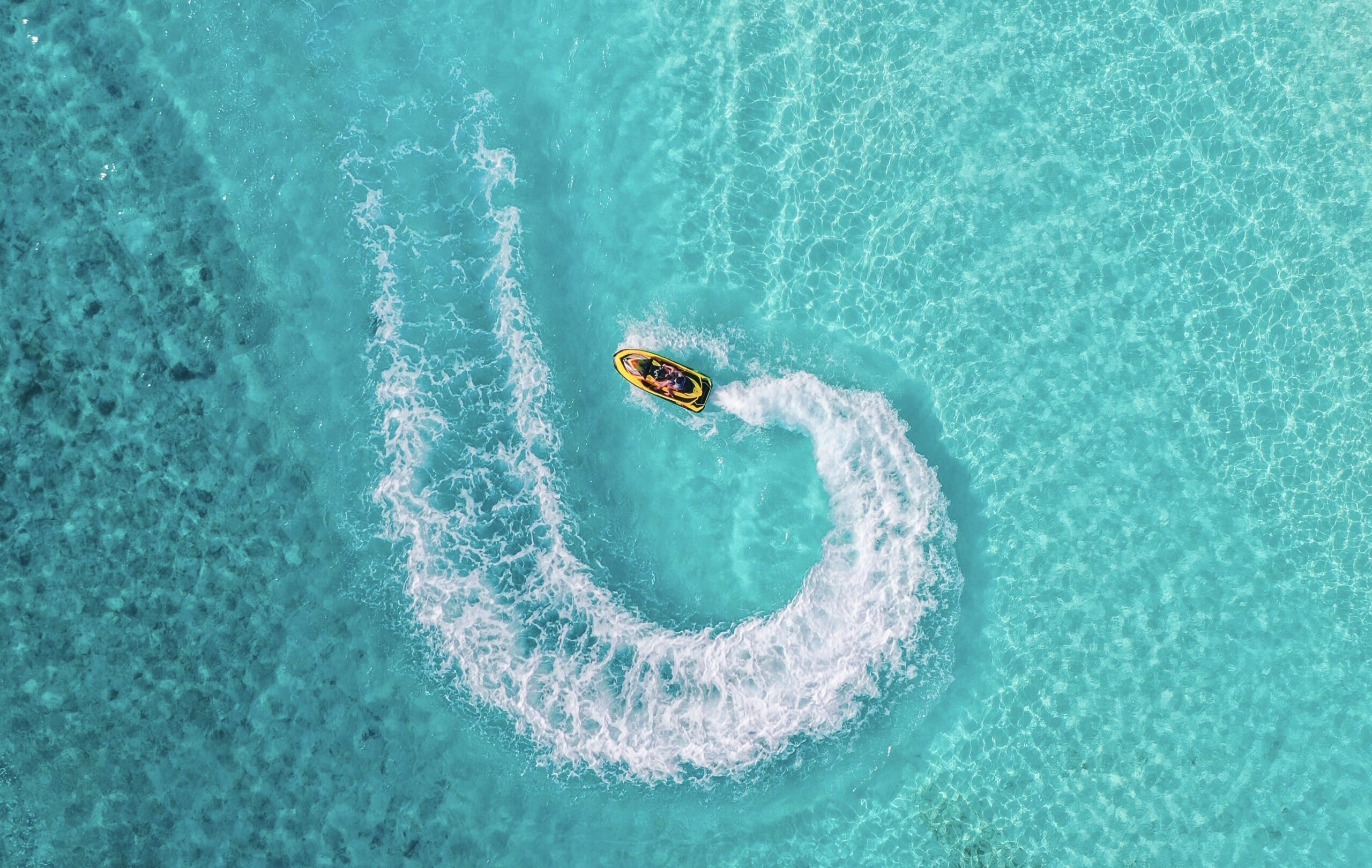
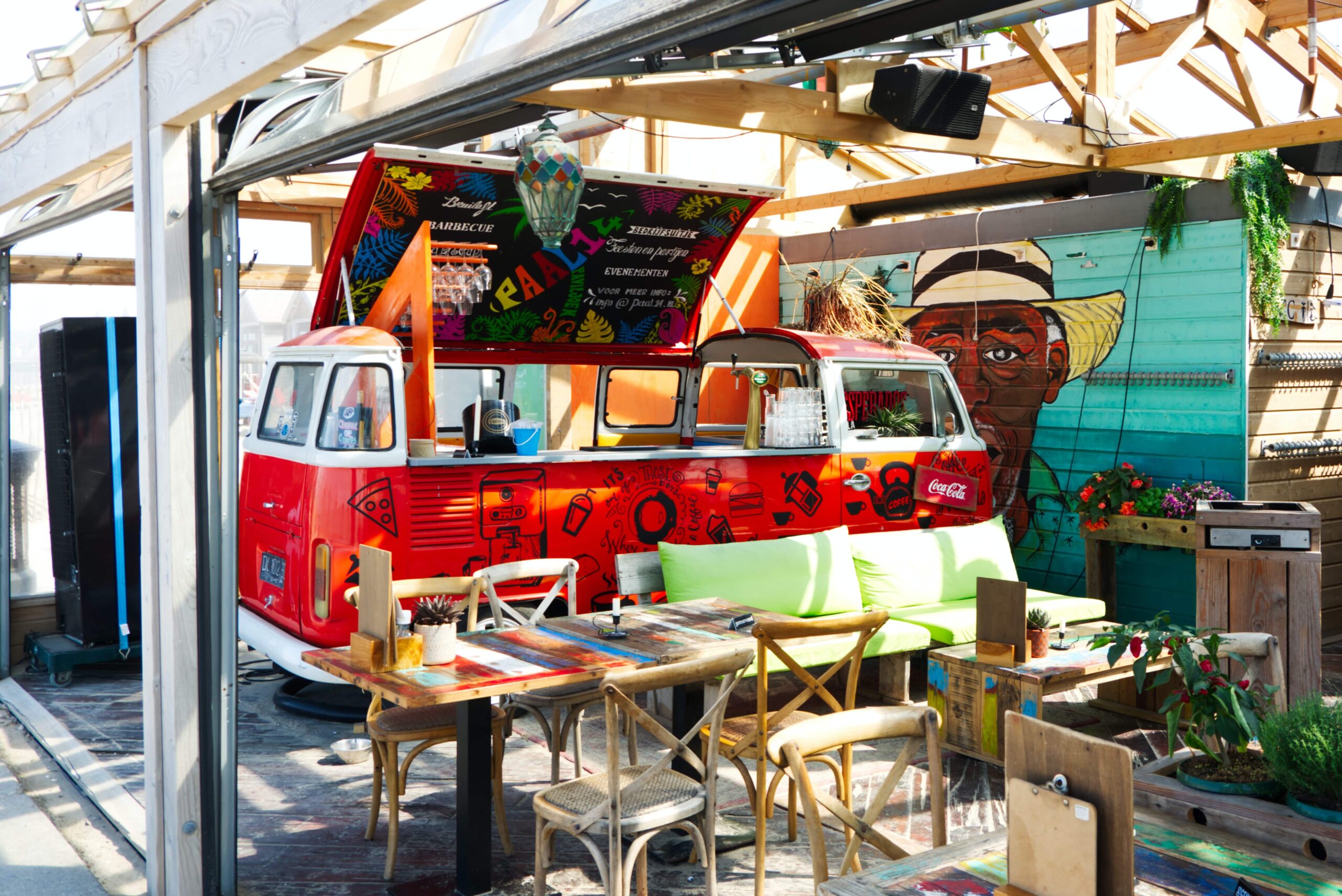
Reserve a table at Graycliff, Nassau’s first five-star restaurant. The 1700s colonial-era residence, with loads of dark wood and wrap-around porches, is as regal as they come. The Bahamian-meets-European cuisine is exquisite, but the wine cellar is the real attraction. The winding basement, which was formerly a prison, today stores far more than 260,000 bottles worth more than $20 million. If you have enough cash, you may even rent out a separate eating space in the wine cellar but you’ll need big bucks for that (like a celebrities bank account level).
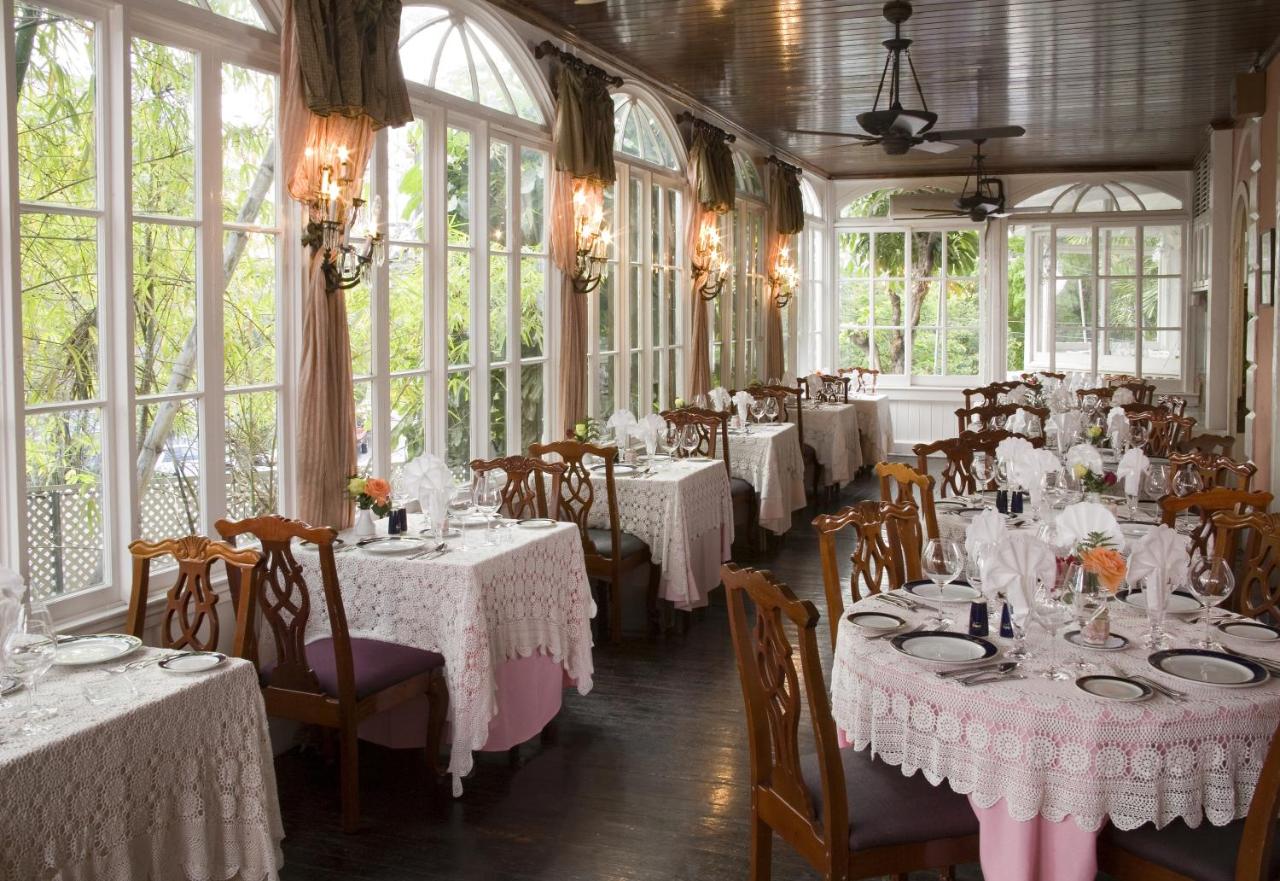

Day 4
Off to a Cay
Cay Option 1
This morning, have breakfast while sailing to Staniel Cay and the Thunderball Grotto. The cave, which was featured in the James Bond films Thunderball and Never Say Never Again, is accessible by snorkel and has beautifully brilliant corals that shimmer in the light.
Fishers may spend one last morning on the water, whether bone, reef or deep-sea fishing.
After a delightful al fresco meal and one more swim, you’ll be taken to the small island airport at Staniel Cay or Black Point for a spectacular return flight home.


Cay Option 2
After a sunrise swim or beach stroll in the sun rise, venture out early this morning for Hammerhead Gulch, a drift dive, or some snorkeling. After a hearty lunch of local conch salad, your yacht will set sail for Norman’s Cay, a mysterious and exciting island.
This island was formerly the active headquarters of Carlos Lehder’s famed cocaine smuggling enterprise, but it now lives in peace with gorgeous bays, beaches, lagoons, and spectacular vistas.
Today is the day for fisherman, while beachgoers may visit Twinkie Beach, a lovely beach littered with seashells and capped by a lone palm tree. Snorkeling in the wreckage of a drug-smuggling ship is a must-see. Guests can also attempt spearfishing or hire a local coastal bonefishing guide.

Alternatively, you can pick one of two other tour options
Option 1
The Exuma Powerboat Adventure takes you to several beautiful smaller islands where you can view iguanas and snorkel with stingrays and sharks. Lunch, equipment, and pick-up and drop-off from your Nassau hotel are all included. This is a simple and stress-free way to see some of the nearby smaller islands without having to worry about renting a boat or navigating unknown seas.
Option 2
If you have limited time, the 5.5 hours Rose Island Day Trip provides a variety of activities, ranging from relaxing on the beach of this gorgeous island to group activities like beach volleyball and snorkeling in the pristine seas, or a mix of these possibilities. All necessary equipment is provided, as is a great buffet meal.
Day 5
Last Minutes to Depart
There’s no hurry to rush home because your flight will likely be short if you’re from the East Coast of the united states be short. Hiking around Fort Charlotte, one of Nassau’s oldest forts, is a must for history fans and everyone who enjoys examining old stuff. It was completed in 1788, and you can see the guns and dungeons that the troops utilized, as well as the secret tubes and tunnels that run beneath the fort’s 100 acres.
Moby Dick Restaurant, a modest restaurant within Potter’s Cay, another seafood market under the Paradise Island Bridge, where you may absorb in the island atmosphere one more time before coming back to reality, offers one last mouthful of fresh fish with your favorite drink.

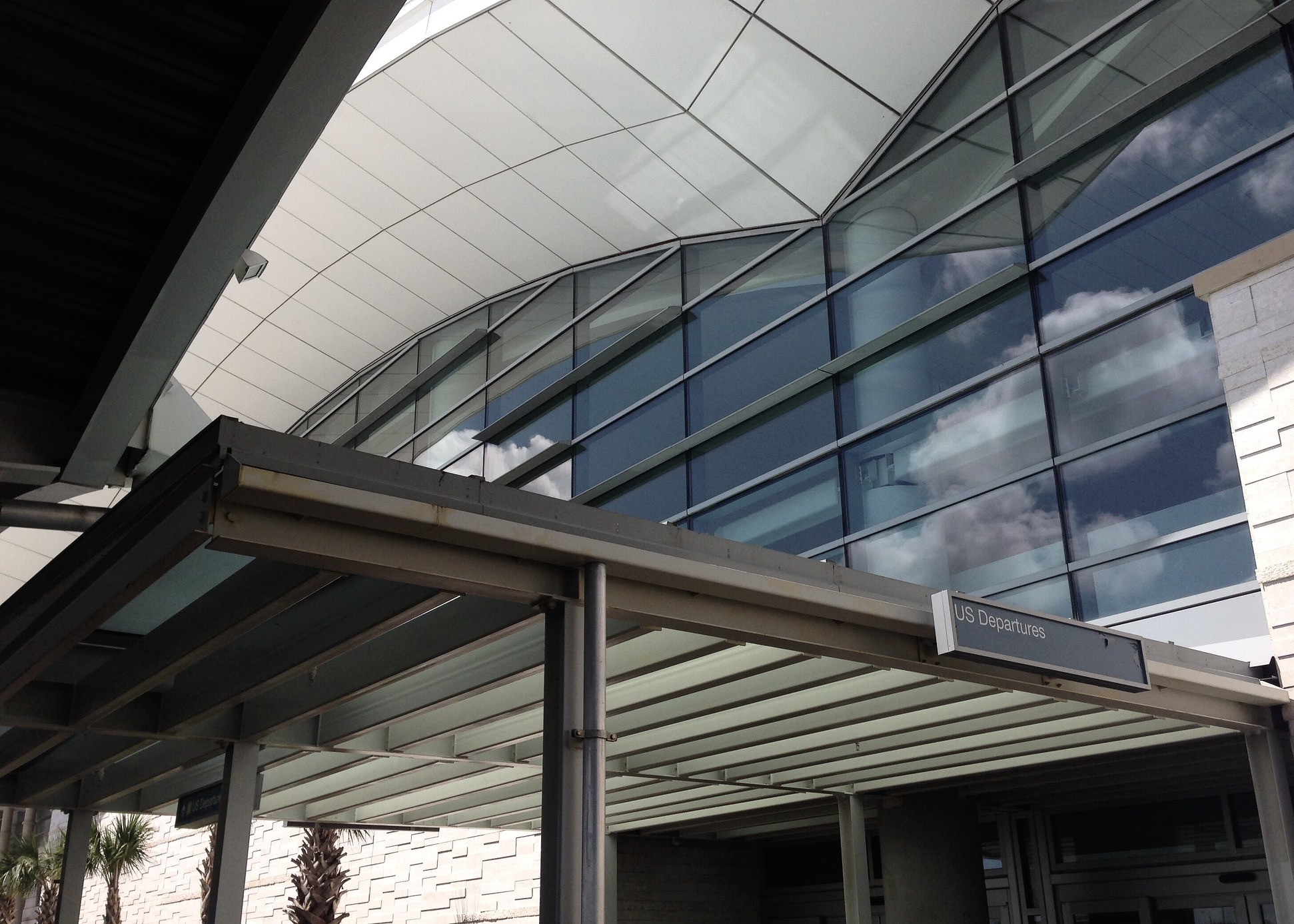
The Most Popular Food in The Bahamas
Your taste buds will be delighted by Bahamian food. The Bahamas’ food is a fusion of West African, European, and American cultures, with indigenous culinary traditions adding flair. The use of seafood is prevalent in Bahamian cuisine. With 700 islands and cays, it’s no wonder that seafood plays a prominent role in Bahamian cuisine. Fresh fruits and vegetables, as well as a range of fish, crawfish, crab, and conch are available. It’s a savory and sweet flavor explosion.
Bahamian cuisine is a mash-up of Southern American (think cornbread, peas, and rice) and Caribbean (think spicy seafood) flavors. What distinguishes Bahamian food is the islands’ love of spices. Properly spicing a meal is essential in Bahamian cuisine to get the desired aroma, and the colors of some of the most popular of dishes.
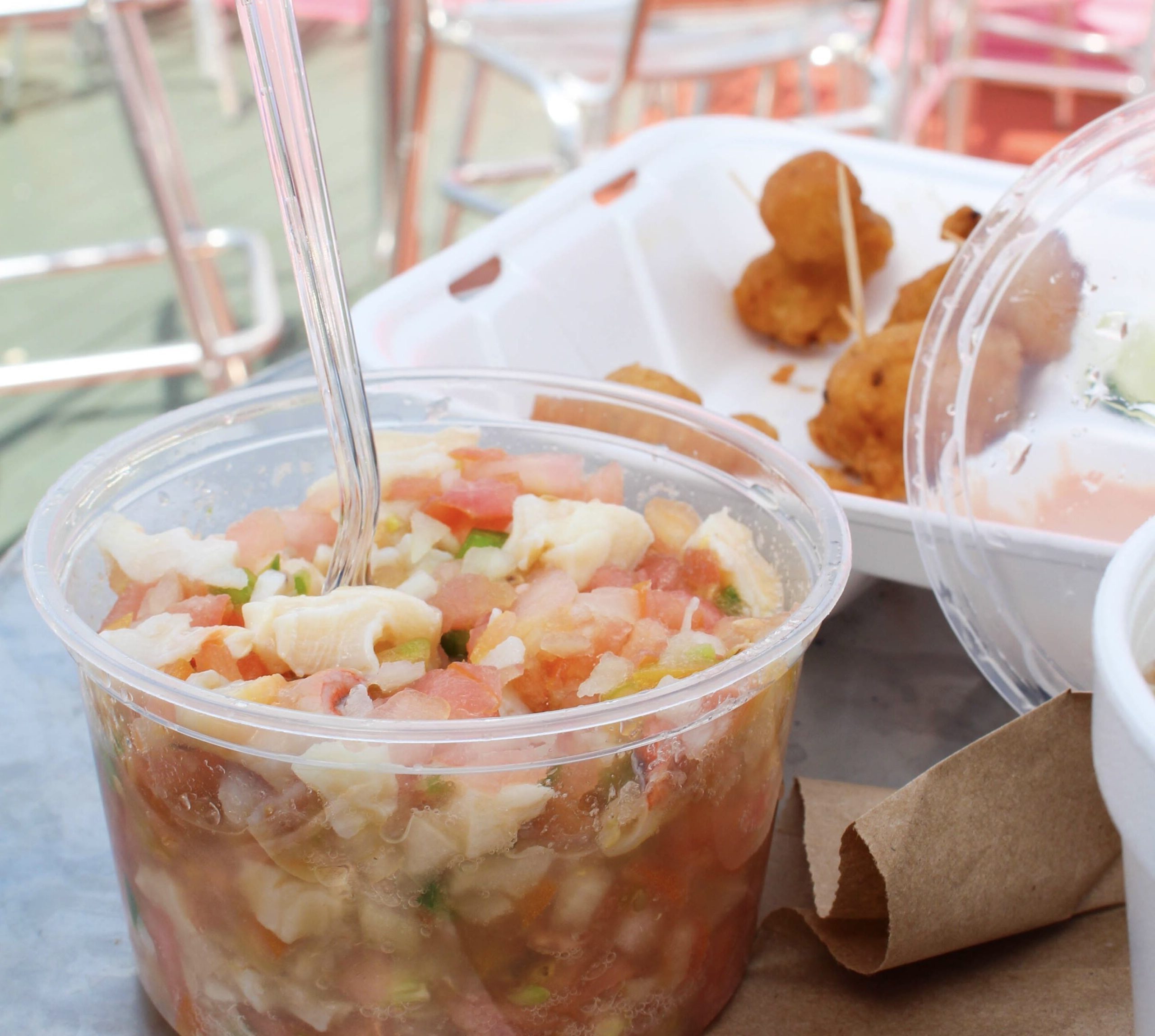
Conch
Conch refers to various sizes of sea snails and is a popular component on many islands, particularly in the Caribbean. On a hot day, pair this light and refreshing entrée with Conch Salad. Conch Fritters, Conch Stew, and Cracked Conch are just a few of the many dishes that include the delicious ingredients.

Crab n’ Rice
Crab and rice is a traditional Bahamian dish. It is a bowl of rich and flavorful rice that is lighter than many other Bahamian plates due to the absence of meat. The crab fat, body, and pincers add flavor to this meal. It could be served with fish and a side dish for supper.
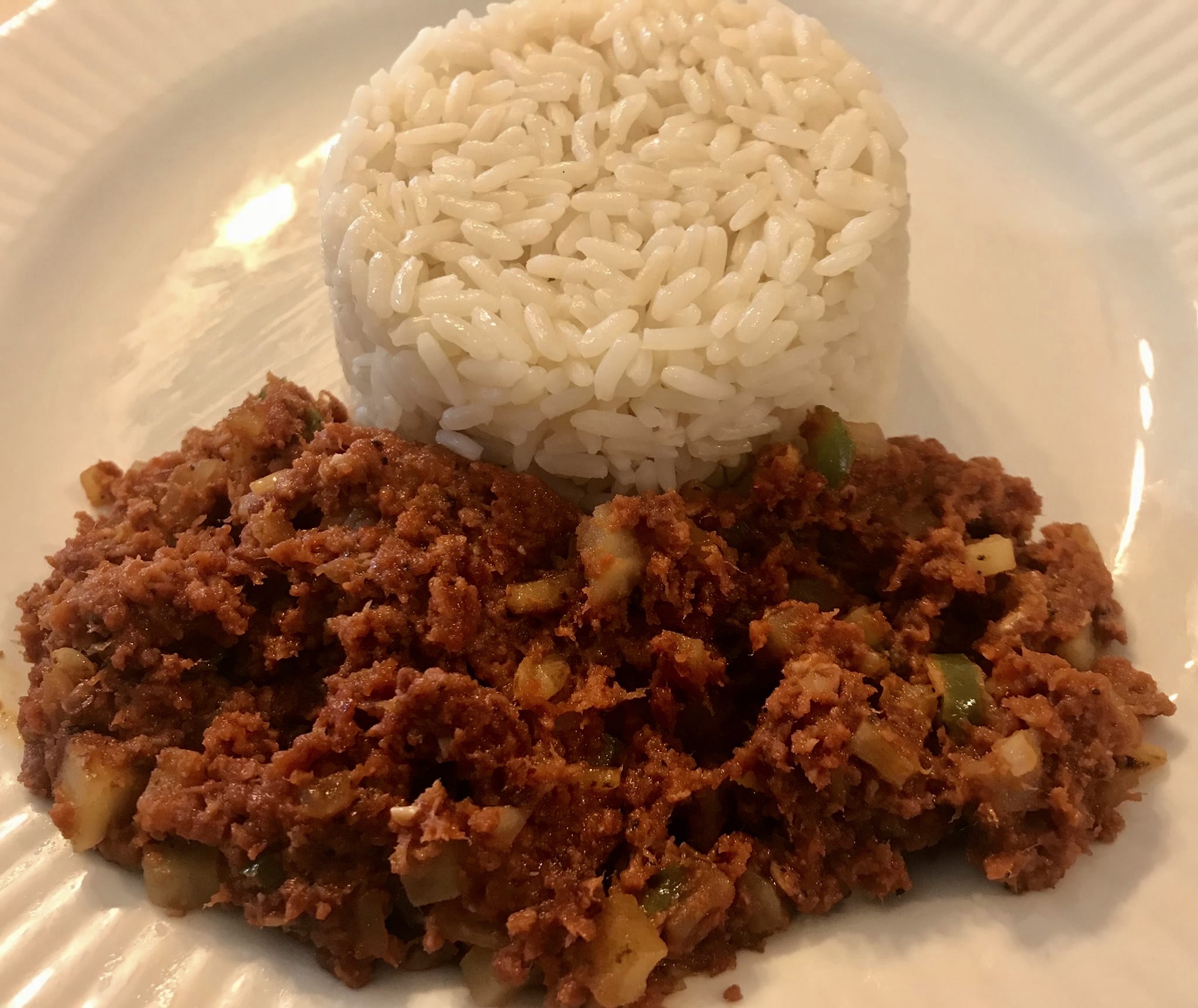
Fire Engine
After sautéing onions, bell peppers, and peeled potatoes in oil, tinned corned meat, tomato paste, and black pepper are added, along with a dash of goat pepper for extra spice if preferred. Corned beef is served steamed (meaning cooked with tomato paste in the Bahamas) over white rice and typically a side of corn. Here comes the fire engine. As for the origin of its name, it remains unknown, but it’s a tasty dish regardless.
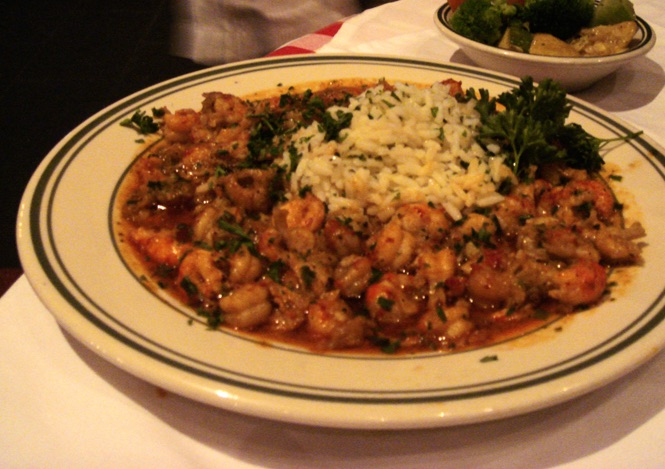
Steamed Crawfish
Crawfish and seafood are plentiful in the Bahamas! This delectable supper is flavorful and tantalizing. The flesh is taken from boiling crawfish tails. The crawfish is then sautéed with onions, celery, bell peppers, salt and pepper, and tomato paste (yet again). It comes with white rice and a delicious side dish.
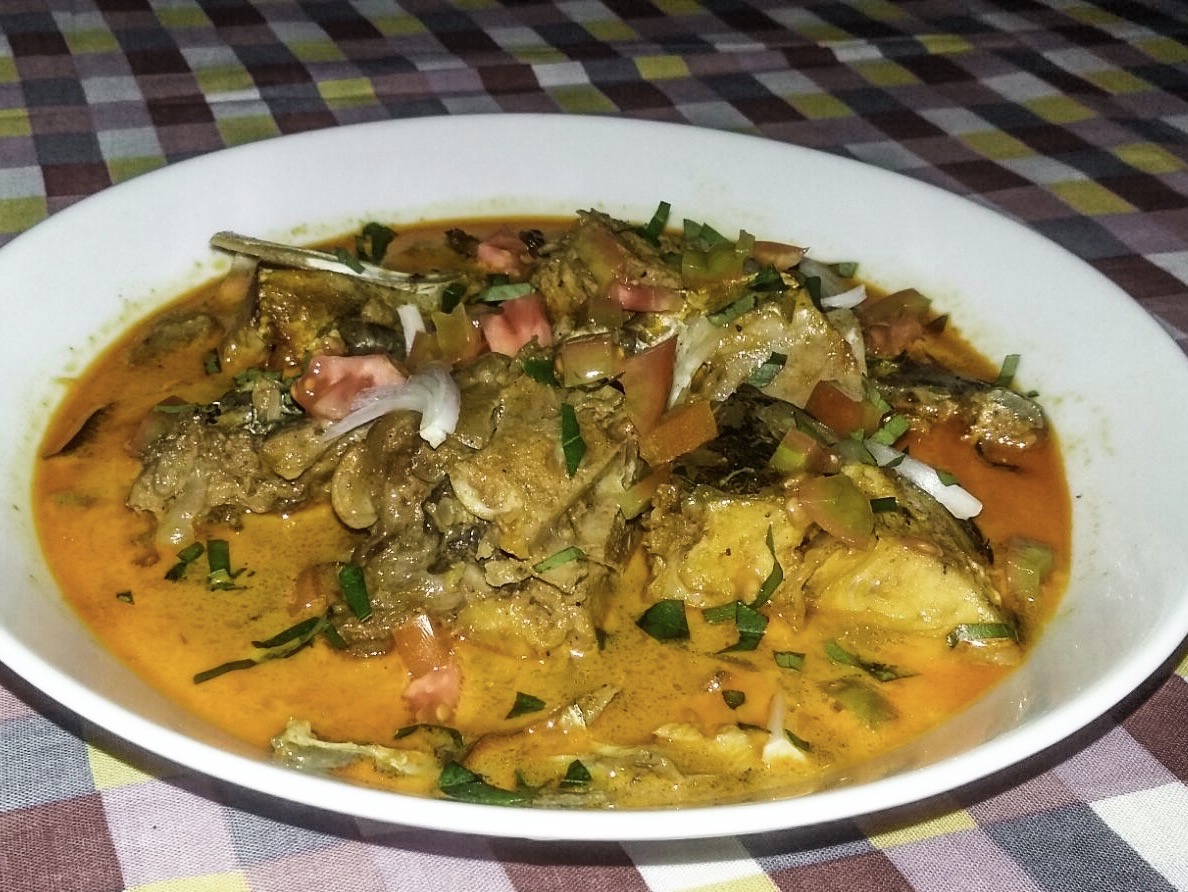
Bahamian Fish Stew
Breakfast of fish stew may seem strange to Europeans and Westerners alike, but it’s entirely usual in the Bahamas. Bahamians prefer stuffing themselves up with delicious foods such as Bahamian boiled fish, tuna and grits, and souse (Bahamian soup). It’s created using grouper or snapper that’s been coated with salt and spicy peppers before marinating in a blend of lime juice, allspice, and freshly squeezed sour orange juice, anyone from New Orleans has a hint?
What's the Travel Budget for The Bahamas?
Flights
- Flights start at roughly $200 from nearby countries. Tickets however on average cost around $900 and can cost more depending on which class and from which country you depart from.
Accommodation
- Nomad Backpacking style travelers can expect to spend around $350 for a week
- Budget travelers can expect to spend around $570 for a week
- Mid-range travelers can expect to spend around $1250 for a week
- Luxury travelers can expect to spend around $4320 for a week
Food Budget (Three meals and drinks)
- Nomad Backpacking style travelers can expect to spend around $27 per person per day
- Budget travelers can expect to pay around $40 per person per day
- Mid-range travelers on average would cost $60 to $80 per person per day
- Luxury travelers can expect to pay around $100 to $150 per person per day
Overall Budget Styles (Not including Flights, Tours, Transportation, or Car Rental)
- Nomad Backpacking style travelers can expect to spend around $550 for a week
- Budget travelers can expect to spend around $900 for one person for a week
- Mid-range travelers can expect to spend around $1810 for one person for a week
- Luxury travelers can expect to spend around $5400 for one person for a week
Flights
- Flights start at roughly $200 from nearby countries. Tickets however on average cost around $900 and can cost more depending on which class and from which country you depart from.
Accommodation
- Nomad Backpacking style travelers can expect to spend around $350 for a week
- Budget travelers can expect to spend around $570 for a week
- Mid-range travelers can expect to spend around $1250 for a week
- Luxury travelers can expect to spend around $4320 for a week
Food Budget (Three meals and drinks)
- Nomad Backpacking style travelers can expect to spend around $27 per person per day
- Budget travelers can expect to pay around $40 per person per day
- Mid-range travelers on average would cost $60 to $80 per person per day
- Luxury travelers can expect to pay around $100 to $150 per person per day
Overall Budget Styles (Not including Flights, Tours, Transportation, or Car Rental)
- Nomad Backpacking style travelers can expect to spend around $550 for a week
- Budget travelers can expect to spend around $900 for one person for a week
- Mid-range travelers can expect to spend around $1810 for one person for a week
- Luxury travelers can expect to spend around $5400 for one person for a week
Flights
- Flights start at roughly $200 from nearby countries. Tickets however on average cost around $900 and can cost more depending on which class and from which country you depart from.
Accommodation
- Nomad Backpacking style travelers can expect to spend around $350 for a week
- Budget travelers can expect to spend around $570 for a week
- Mid-range travelers can expect to spend around $1250 for a week
- Luxury travelers can expect to spend around $4320 for a week
Food Budget (Three meals and drinks)
- Nomad Backpacking style travelers can expect to spend around $27 per person per day
- Budget travelers can expect to pay around $40 per person per day
- Mid-range travelers on average would cost $60 to $80 per person per day
- Luxury travelers can expect to pay around $100 to $150 per person per day
Overall Budget Styles (Not including Flights, Tours, Transportation, or Car Rental)
- Nomad Backpacking style travelers can expect to spend around $550 for a week
- Budget travelers can expect to spend around $900 for one person for a week
- Mid-range travelers can expect to spend around $1810 for one person for a week
- Luxury travelers can expect to spend around $5400 for one person for a week
Flights
- Flights start at roughly $200 from nearby countries. Tickets however on average cost around $900 and can cost more depending on which class and from which country you depart from.
Accommodation
- Nomad Backpacking style travelers can expect to spend around $350 for a week
- Budget travelers can expect to spend around $570 for a week
- Mid-range travelers can expect to spend around $1250 for a week
- Luxury travelers can expect to spend around $4320 for a week
Food Budget (Three meals and drinks)
- Nomad Backpacking style travelers can expect to spend around $27 per person per day
- Budget travelers can expect to pay around $40 per person per day
- Mid-range travelers on average would cost $60 to $80 per person per day
- Luxury travelers can expect to pay around $100 to $150 per person per day
Overall Budget Styles (Not including Flights, Tours, Transportation, or Car Rental)
- Nomad Backpacking style travelers can expect to spend around $550 for a week
- Budget travelers can expect to spend around $900 for one person for a week
- Mid-range travelers can expect to spend around $1810 for one person for a week
- Luxury travelers can expect to spend around $5400 for one person for a week
If you want to know what to pack, read this list below:
- This is a casual island country that can get extremely hot, dress accordingly
- Raincoat or Light Waterproof Jacket
- Hiking Boots or Sturdy Sneakers (Shoes You Don’t Mind Getting Wet)
- Sunscreen
- Insect Protection – Repellent and Clothing
- Sunglasses and Sun Hat
- Water Shoes
- Beach Towels/Sarong
- Dry Bag
- Money Belt or Cross Bag
- Portable Medical Kit
- Flashlight or Headlamp
- Copies of your passport.
- Get all the needed vaccinations before traveling
- A power bank is a must in any travel.
- Always have some cash with you just in case there are no ATMs and if you are dealing with a business that solely accepts cash
- Get yourself an adapter for your gadgets
- 1 toothbrush
- 1 tube of toothpaste
- 1 razor
- 1 package of dental floss
- 1 small bottle of shampoo
- 1 small bottle of shower gel
- 1 towel
- Deodorant
- Band-Aids
- Hydrocortisone cream
- Antibacterial cream
- Earplugs
- Tylenol
- Hand sanitizer (germs = sick = bad holiday)
- A key or combination lock
- Zip-lock bags
- Plastic bags (great for laundry)
- Universal charger/adaptor
- LifeStraw (A water bottle with a purifier)
- 1 dry shampoo spray & talc powder
- 1 hairbrush
- Makeup you use
- Hairbands & hair clips
- Feminine hygiene products
Clothing For Boys
- 1 pair of jeans or khaki pants
- 1 pair of shorts
- 1 bathing suit
- 5 T-shirts
- 1 long-sleeved T-shirt
- 1 pair of flip-flops
- 1 pair of sneakers
- 6 pairs of socks
- 5 pairs of boxer shorts
Clothing For Girls
- 1 swimsuit
- 1 sarong
- 1 pair of stretchy jeans
- 1 pair of leggings
- 2-3 long-sleeve tops
- 2-3 T-shirts
- 3-4 spaghetti tops
- 1 light cardigan
Want to plan your own trip, here are some of the best resources that can help you
- Skyscanner – They search small websites and budget airlines that larger search sites tend to miss. They are hands down the number one place to start.
- Momondo – This is another favorite flight search engine because they search such a wide variety of sites and airlines. Always check here too.
- Booking.com – The best all-around booking site that constantly provides the most affordable and lowest rates. They have the widest selection of budget accommodation.
- Couchsurfing – This website allows you to stay on people’s couches or spare rooms for free. It’s a great way to save money while meeting locals who can tell you the ins and outs of their city. The site also lists events you can attend to meet people (even if you’re not staying with someone).
- Intrepid Travel – If you want to do group tours, go with Intrepid. They offer good small group tours that use local operators and leave a small environmental footprint.
- Grassroots Volunteering – For volunteering, Grassroots Volunteering compiles a list of good local volunteer organizations that keep the money within the community.
- Get Your Guide – Get Your Guide is a huge online marketplace for tours and excursions. They have tons of tour options available in cities all around the world, including everything from cooking classes, walking tours, street art lessons, and more! It has the world’s largest collection of things to do with more than 30,000 activities in 7500 destinations.
- SafetyWing – Safety Wing offers convenient and affordable plans tailored to digital nomads and long-term travelers. They have cheap monthly plans, great customer service, and an easy-to-use claims process that makes it perfect for those on the road.
- Trip Advisor: Check the reviews and then book your accommodation. TripAdvisor is where you go when you want to compare prices with multiple accommodation providers.
- VRBO: is the main search engine to use when you are looking for a home or apartment rental. It can sometimes be cheaper than hotels and it is the best way to stay in areas that offer a more local feel.
- Hostelworld: With one of the largest databases of hostels in the world, Hostelworld is the go-to site when you are looking for budget accommodation.
- Rome 2 Rio: If you want to see how to get somewhere by plane, train, bus, ferry, or car Rome2Rio lays it all out for you as well as related costs.
- World Nomads Insurance: When traveling you should always have travel insurance. We have found the best bang for your buck is by far World Nomads.
Final Thoughts on The Bahamas
The Bahamas has a deep cultural history and a natural beauty, with almost 700 unfrequented and uninhabited islands to discover, so vibrant that is worth traveling to. Would you?
If you’ve been to The Bahamas let us know how your trip was in the comments below.